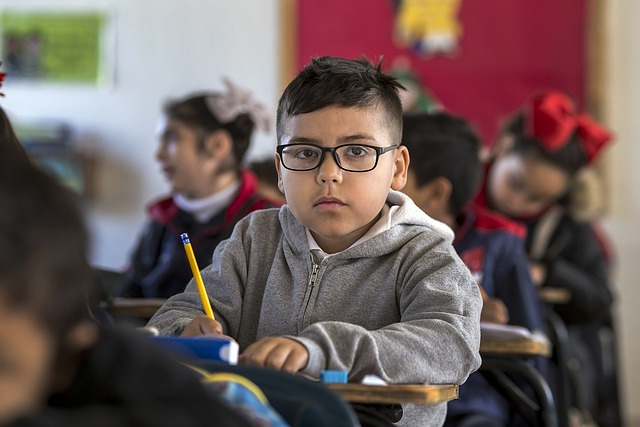Teaching climate change is a necessity. As the effects of global warming become more apparent, students of all ages need to understand the causes, impacts, and solutions to this pressing issue. Climate change is both an environmental topic and a global challenge that affects economies, societies, and future generations. Incorporating climate change education into the classroom can help foster awareness and inspire students to take action.
The need for effective climate change action has never been more urgent. Students educated on the science, policy, and solutions surrounding climate change are better equipped to make informed decisions and contribute to positive change. With the right teaching strategies, educators can engage students in meaningful discussions and activities that deepen their understanding of this complex issue.
Here are some ways to teach about climate change, making the topic accessible and engaging for students.
1. Incorporating Real-World Examples and Case Studies
One of the most effective ways to teach about climate change is by bringing real-world examples into the classroom. By showcasing actual case studies of climate change impacts, students can better understand the tangible consequences of this global issue. Whether it’s the devastating wildfires in Australia, the melting ice caps in the Arctic, or stronger hurricanes, these examples allow students to see how climate change affects different parts of the world.
By comparing scenarios, students gain a more comprehensive understanding of the complex factors contributing to climate change. Real-world examples can spark meaningful classroom discussions, encouraging students to think critically about how these events are interconnected and what solutions might be implemented to mitigate their effects.
2. Integrating Interactive and Hands-On Learning
Interactive and hands-on learning is an excellent way to engage students in climate change education. When students can physically interact with the subject matter, it often leads to deeper understanding and retention. For example, conducting simple experiments demonstrating the greenhouse effect or creating rising sea-level models can help visualize complex scientific concepts. These hands-on activities allow students to directly observe how climate change impacts their world and the science behind it.
Incorporating climate simulations and real-time data analysis into lessons also helps students understand the magnitude of climate change. Using tools like climate models or apps that track carbon emissions can empower students to explore potential future scenarios based on current trends. These activities make the topic more engaging and help students build critical thinking and problem-solving skills as they work to understand the impacts of human actions on the planet.
3. Teaching Through Literature and Media
Literature and media stories are powerful tools for teaching climate change in a way that resonates with students. Books, documentaries, and films offer a creative and relatable approach to understanding the complexities of climate change, especially when presented through storytelling.
Age-appropriate literature can help students connect emotionally with the issue, whether through fictional stories like “The Lorax” by Dr. Seuss or non-fiction books such as “The Uninhabitable Earth” by David Wallace-Wells. These works explain the science of climate change and explore the human impact, giving students a more holistic view. These resources can make the topic more immediate and personal, encouraging students to think about how climate change will affect their lives.
4. Promoting Student Philanthropy and Activism
Encouraging students to engage in philanthropy and activism is a powerful way to connect classroom learning with real-world action. By involving students in projects that focus on climate solutions, such as organizing local cleanup events, participating in tree planting, or supporting environmental charities, teachers can inspire a sense of responsibility and agency.
Programs that link social causes with environmental issues can encourage students to think about sustainability through a philanthropic lens. Engaging in fundraising, volunteering, or advocating for policy changes helps students understand that individual efforts can lead to collective change. Moreover, by participating in these activities, students can develop leadership and teamwork skills while learning the importance of giving back to their communities in the fight against climate change.
5. Emphasizing the Importance of Collective Action
Teaching the value of collective action is essential in addressing climate change, as the issue requires collaborative efforts to create change. It’s important to convey to students that while individual actions matter, the collective efforts of communities, nations, and global organizations are necessary to mitigate the effects of climate change. Encouraging students to work together on sustainability projects can demonstrate how teamwork and shared responsibility can lead to positive outcomes.
Teaching students valuable life lessons, like how to plant a bee-friendly garden to create a safe space for some of the world’s most important creatures, can teach children how to work together to build a better future.
Teachers can highlight examples of successful collective action, such as local community efforts to reduce carbon footprints. These examples can help students understand how large-scale change often starts with small, community-driven initiatives. By teaching students that they are part of a larger movement, educators can inspire them to actively promote sustainability within their school.
Class Dismissed, Climate Committed
Incorporating climate change education into the classroom is not just about teaching students the science behind it — it’s about empowering them to become active participants in shaping a sustainable future. Educators can use real-world examples, interactive activities, literature, and media to make climate change an engaging and relatable topic. Promoting student philanthropy and collective action further instills a sense of responsibility and the importance of working together to tackle global challenges.
Beth Rush is the green wellness editor at Body+Mind. She has more than five years of experience writing and editing articles covering topics like sustainable transit and the importance of green spaces in urban planning. You can find Beth on Twitter @bodymindmag. Subscribe to Body+Mind for more posts by Beth!
Image by Ernesto Eslava





